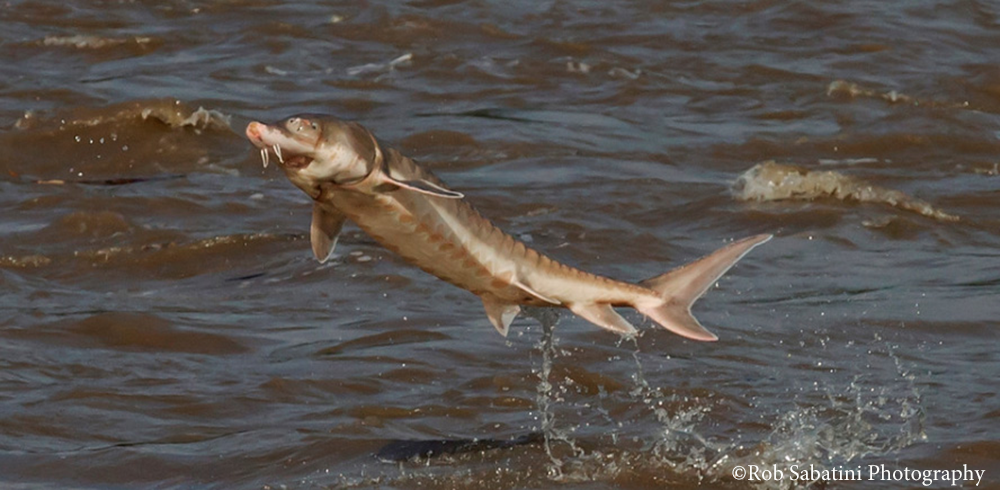An ancient creature is returning to the James River. It is continuing an annual migration that has taken place for eons, traveling great distances to reach its home spawning grounds. You can witness this endangered species return the James River where its population was nearly destroyed, but today is mounting a comeback.
Atlantic sturgeon (Acipenser oxyrinchus oxyrinchus) have lived since the age of the dinosaurs, making them one of the oldest groups of fish in existence today. They have been around so long that they have earned the nickname “living fossils.” Yet the increasing effects of mankind on sturgeon proved to be more than they could contend with. Overfishing, pollution, and loss of habitat during the 20th century sent the Atlantic sturgeon population to the brink of collapse.
Calling all sturgeon lovers!
We are excited to announce the launch of a new story map celebrating the amazing Atlantic sturgeon as envisioned by three local artists. The story map highlights sturgeon sculptures along the Appomattox River, commissioned by CultureWorks to create public art for the community and raise awareness of FOLAR’s mission to conserve, protect, and promote the Appomattox River for all to enjoy. Check out the story map, check out the sculptures, and check out additional opportunities to celebrate sturgeon!
 Sturgeon illustration: Duane Rave, USFWS
Sturgeon illustration: Duane Rave, USFWS
But in the James River the story of Atlantic sturgeon has taken a remarkable turn in recent years. It is clear that sturgeon are not only in the James, but that they’re leaping out of the water during their spawning season – a behavior known as breaching. Sturgeon can grow as large as 14 ft and 800 lbs and often come completely out of the water during a breach – an incredible feat for the James River’s largest species. With a little luck, a visit to some portions of the James River can offer an unforgettable experience to the onlooker witnessing a breach.
More positive news came in 2018 with the discovery of five juvenile sturgeon during a James River Association education program with students. Since then, hundreds more have been documented by Virginia Commonwealth University researchers, showing that 2018 was a remarkable year for sturgeon spawning. Atlantic sturgeon appear to be on the rise in the James River, but the population is still far from a complete recovery. Our continued actions to protect the species are critical to bringing them back – and are a constant reminder of how extraordinarily lucky we are to have them in the James River.
When are sturgeon in the James?
Atlantic sturgeon are typically in the James River from July through October for their fall spawning cycle, but peak activity is believed to occur in mid-September. Cooling water temperatures, precipitation and river levels are a few factors that influence where and when we see sturgeon breaching. Boaters most frequently report sturgeon sightings between Hopewell and Richmond. To increase your odds, here are a few public parks to access the river and watch for breaching sturgeon.
- City Point, Hopewell
- Dutch Gap Boat Ramp and Henricus Overlook, Chesterfield
- Osborne Landing, Henrico
- Intermediate Terminal/Ancarrow’s Landing, Richmond
- Floodwall Walk, east of 14th Street, Richmond
How do I know a breach when I see one?
A breach may last less than a second, and if you’re not fast enough you may only see or hear a splash. Sturgeon typically come completely out of the water and are hard to mistake. Be careful not to confuse a sturgeon for a gar, or a breach for a small splash caused by another fish.
Report a sturgeon Sighting
Your observations can be very helpful in tracking sturgeon activity. Tell us where and when you’ve seen sturgeon breaches to help us populate the map shown below. If you have seen a sturgeon breach this season on the James submit a report through this link.
This form will automaticly poulate the sturgeon reporting map below. View the full screen version here.
Atlantic sturgeon are an endangered species. It is a federal crime to harass, or commercially or recreationally fish for Atlantic sturgeon.

